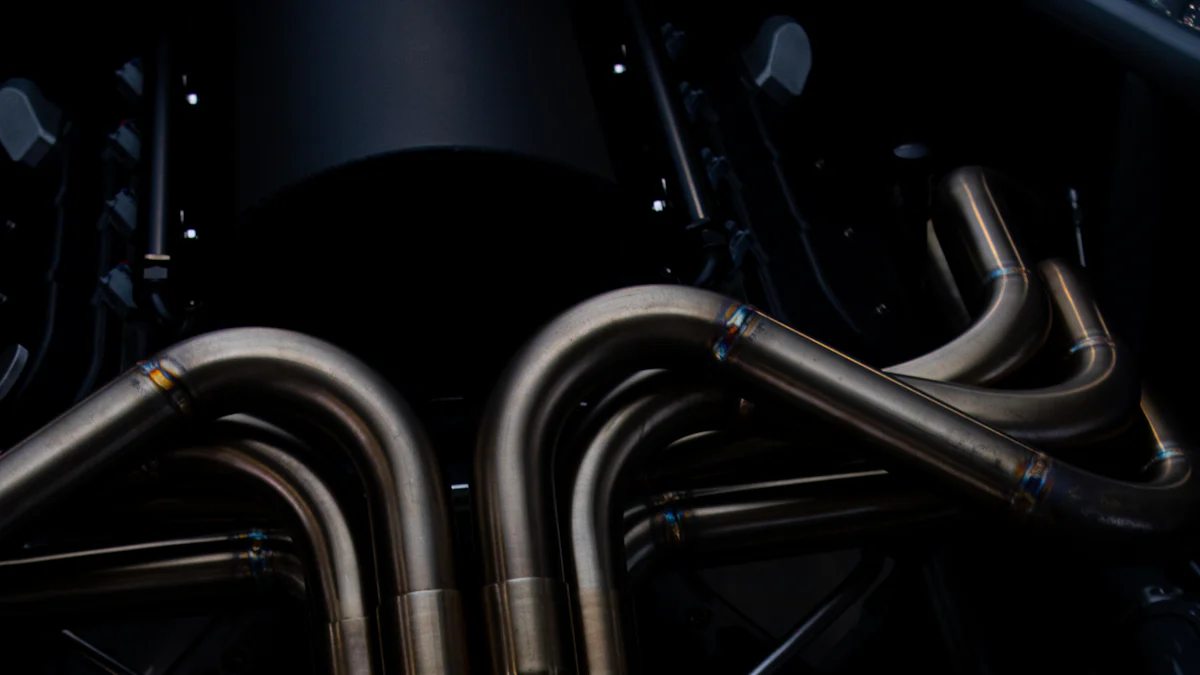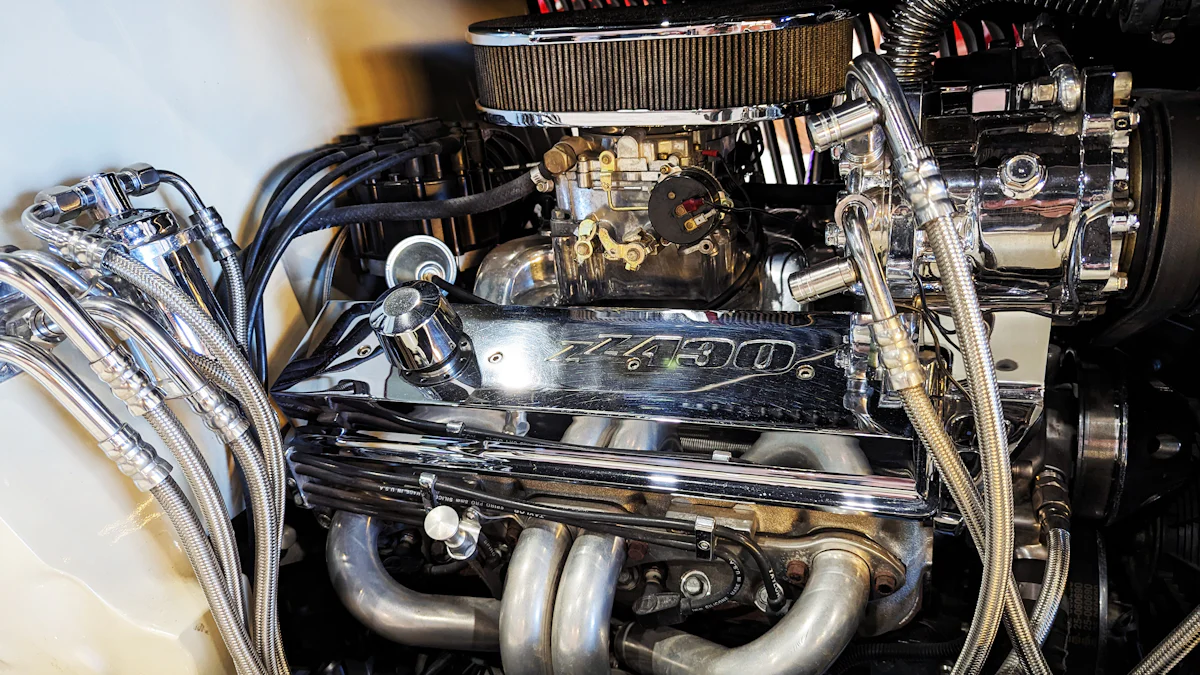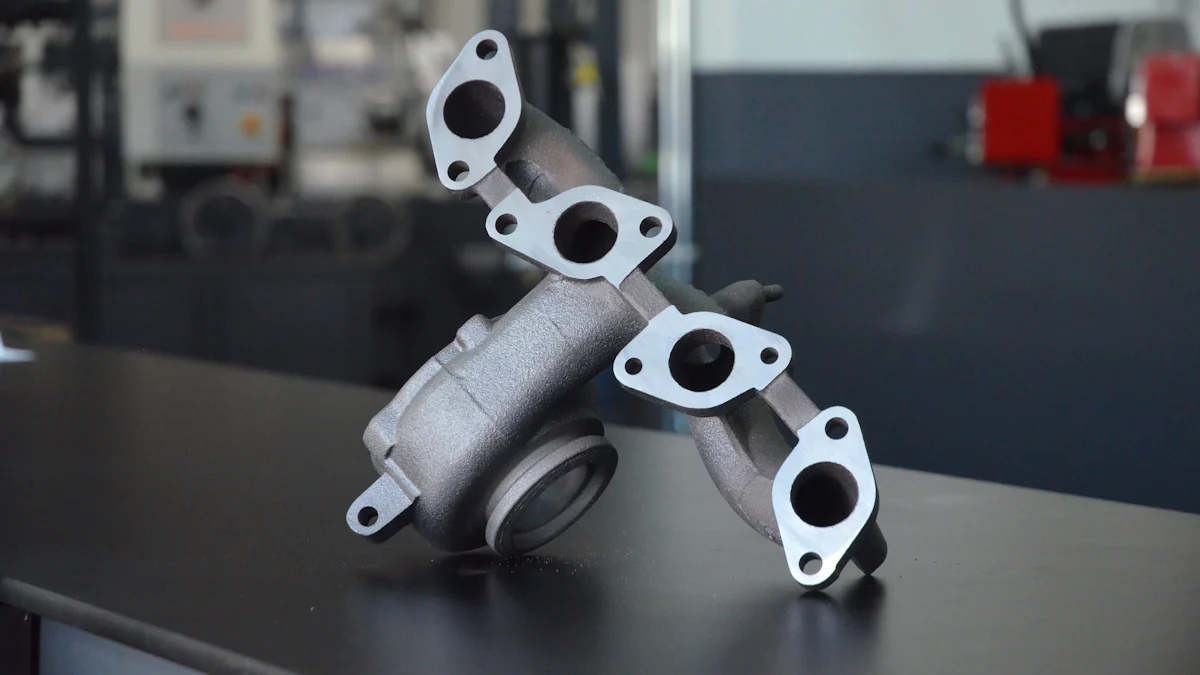
The exhaust manifold plays a crucial role in automotive engineering by collecting exhaust gases from multiple cylinders and channeling them into one pipe. The design of exhaust manifolds has evolved significantly, influenced by the need for increased fuel efficiency and stringent emission regulations. Understanding this journey provides valuable insights for both automotive enthusiasts and professionals, highlighting the importance of continuous advancements in exhaust manifold technology.
The Early Designs of Exhaust Manifolds

The Birth of Exhaust Manifolds
The First Concepts and Prototypes
The concept of the exhaust manifold emerged with the advent of multi-cylinder engines. Early designs aimed to channel exhaust gases from multiple cylinders into a single pipe. Engineers experimented with various configurations to optimize gas flow and reduce back pressure. Initial prototypes were rudimentary, often crafted by hand, reflecting the limited manufacturing capabilities of the time.
Materials and Manufacturing Techniques
Cast iron became the material of choice for early exhaust manifolds. Its high resistance to heat and corrosion made it ideal for handling the harsh conditions within the engine bay. Cast iron’s durability ensured that these components could withstand prolonged exposure to extreme temperatures without degrading. Manufacturing techniques involved casting molten iron into molds, a process that allowed for mass production while maintaining structural integrity.
Challenges and Limitations
Performance Issues
Early exhaust manifolds faced significant performance challenges. The design often resulted in uneven gas flow, leading to increased back pressure. This inefficiency reduced engine performance and fuel economy. Engineers struggled to create designs that could balance the need for efficient gas flow with the constraints of existing manufacturing methods.
Durability Concerns
Durability posed another major challenge for early exhaust manifolds. Despite the robustness of cast iron, prolonged exposure to high temperatures and corrosive gases led to cracking and warping over time. Maintenance and replacement of these components became a frequent necessity, adding to the overall cost of vehicle ownership. Engineers continuously sought ways to enhance the longevity of exhaust manifolds through improved materials and design innovations.
The Evolution of Exhaust Manifolds
Mid-20th Century Developments
Introduction of New Materials
The mid-20th century marked a significant shift in exhaust manifold development. Engineers began exploring new materials to enhance performance and durability. Stainless steel emerged as a popular choice due to its superior resistance to heat and corrosion. This material allowed for thinner walls, reducing weight while maintaining structural integrity. The adoption of stainless steel improved the overall efficiency of the exhaust system by minimizing heat loss.
Improvements in Design and Efficiency
Design improvements also played a crucial role during this period. Engineers utilized advanced manufacturing techniques to create more intricate and efficient designs. The introduction of mandrel bending enabled the production of smoother bends, reducing turbulence and back pressure. This innovation significantly improved exhaust gas flow, enhancing engine performance and fuel efficiency. The use of simulation tools allowed for precise modeling of gas flow dynamics, leading to optimized manifold designs.
The Impact of Emission Regulations
Changes in Design to Meet Standards
The implementation of stringent emission regulations in the latter half of the 20th century necessitated further advancements in exhaust manifold technology. Manufacturers had to redesign manifolds to meet new standards for reducing harmful emissions. The incorporation of catalytic converters into the exhaust system became mandatory. This addition required manifolds to withstand higher temperatures and support the efficient operation of these devices. Engineers focused on creating designs that facilitated the rapid heating of catalytic converters, ensuring optimal performance.
Technological Innovations Driven by Regulations
Technological innovations driven by emission regulations led to the development of more sophisticated exhaust manifold systems. The use of computational fluid dynamics (CFD) became widespread, allowing engineers to simulate and analyze exhaust gas behavior in detail. This technology enabled the creation of manifolds with complex geometries that maximized gas flow and minimized emissions. The integration of turbocharging systems with exhaust manifolds also gained popularity. Turbocharged engines required manifolds capable of handling increased pressure and temperature, driving further advancements in material science and design.
Modern Innovations in Exhaust Manifolds

Advanced Materials and Coatings
High-Performance Alloys
Automotive manufacturers now use high-performance alloys to enhance the durability and efficiency of exhaust manifolds. These advanced materials include high-strength steel, stainless steel, and aluminized steel. The superior mechanical properties of these alloys allow exhaust manifolds to withstand extreme temperatures and corrosive gases. This innovation has significantly improved the overall performance of exhaust systems in modern vehicles.
Ceramic Coatings
Ceramic coatings have become a popular choice for enhancing exhaust manifold performance. These coatings provide excellent thermal insulation, reducing heat transfer to surrounding engine components. Ceramic coatings also offer superior resistance to corrosion and wear, extending the lifespan of exhaust manifolds. By maintaining lower surface temperatures, ceramic coatings help improve engine efficiency and reduce emissions.
Design Enhancements
Computational Fluid Dynamics (CFD) in Design
Engineers now utilize Computational Fluid Dynamics (CFD) to optimize exhaust manifold designs. CFD allows for detailed simulation and analysis of exhaust gas behavior within the manifold. This technology enables the creation of complex geometries that maximize gas flow and minimize back pressure. The use of CFD has led to significant improvements in engine performance and fuel efficiency.
Integration with Turbocharging Systems
The integration of turbocharging systems with exhaust manifolds has revolutionized engine performance. Turbocharged engines require exhaust manifolds capable of handling increased pressure and temperature. Advanced materials and innovative designs ensure that these manifolds can efficiently channel exhaust gases to the turbocharger. This integration enhances power output and improves fuel economy, making turbocharged engines more efficient and responsive.
Practical Tips for Maintenance and Upgrades
Identifying Signs of Wear and Tear
Regular inspection of exhaust manifolds is crucial for maintaining optimal performance. Signs of wear and tear include visible cracks, rust, and unusual noises from the exhaust system. A decrease in engine performance or an increase in fuel consumption may also indicate manifold issues. Early detection and timely maintenance can prevent further damage and costly repairs.
Choosing the Right Aftermarket Manifold
Selecting the right aftermarket exhaust manifold requires careful consideration of several factors. Compatibility with the vehicle model is essential to ensure a proper fit and optimal performance. High-quality materials such as stainless steel or ceramic-coated options offer better durability and efficiency. Consulting with automotive professionals can provide valuable insights and recommendations for choosing the best aftermarket manifold.
The journey of the exhaust manifold showcases remarkable advancements from early designs to modern innovations. Continuous improvements in materials and manufacturing techniques have significantly enhanced performance and durability. The importance of ongoing advancements in exhaust manifold technology cannot be overstated. Staying informed about future developments will benefit both automotive enthusiasts and professionals.
Post time: Jul-22-2024



